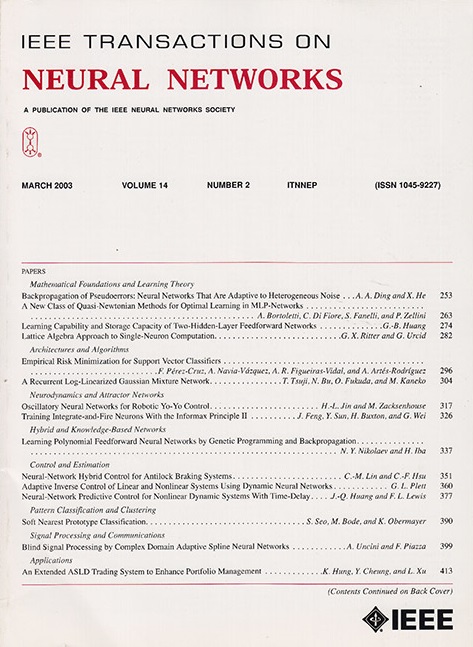Learning Temporal Features With Alternated Similarity and Proximity Attention for Time-Series Prediction
IF 8.9
1区 计算机科学
Q1 COMPUTER SCIENCE, ARTIFICIAL INTELLIGENCE
IEEE transactions on neural networks and learning systems
Pub Date : 2025-04-30
DOI:10.1109/TNNLS.2025.3559222
引用次数: 0
Abstract
Time-series prediction is a fundamental problem in various scientific and engineering domains. Recently, attention-based models have shown great promise in long-term time-series forecasting. However, we prove that vanilla attention is equivalent to a one-step random walk on a bipartite graph between the query and the keys, in which the limited number of walks and simplified graph structure could make it less powerful in capturing complex, high-order featural and temporal dependencies. Inspired by how human brains iteratively reactivate memories through reminding, we propose “Alternated Similarity And Proximity Attention,” or基于交替相似和邻近注意的时间序列预测学习
时间序列预测是各个科学和工程领域的一个基本问题。最近,基于注意力的模型在长期时间序列预测中显示出很大的前景。然而,我们证明了香草注意力相当于在查询和键之间的二部图上的一步随机行走,其中有限的行走次数和简化的图结构可能使其在捕获复杂,高阶特征和时间依赖性方面不那么强大。受人类大脑如何通过提醒迭代地重新激活记忆的启发,我们提出了“交替相似和接近注意”,即ASAP-attention。asp -attention在两个并发视图(图)上采用随机漫步,分别捕获特征相似性和时间点之间的时间接近性。特别是,随机漫步交替访问两个图,每次都记住以前的概率配置,以构建一个连贯的分布链,以检索有用的历史数据。这种时间线索和特征线索之间的动态相互作用增强了模型在不使用位置编码的情况下捕获隐式和异构数据依赖的能力。当将asp -attention与仅编码的Transformer体系结构结合在一起时,我们观察到,在针对长时间序列预测(例如,天气、电力、疾病和汇率数据)的各种基准数据集上,针对各种最先进方法的广泛集合,得到了非常有希望的结果。我们的源代码可从https://github.com/jychen01/ASAP-attention获得
本文章由计算机程序翻译,如有差异,请以英文原文为准。
求助全文
约1分钟内获得全文
求助全文
来源期刊

IEEE transactions on neural networks and learning systems
COMPUTER SCIENCE, ARTIFICIAL INTELLIGENCE-COMPUTER SCIENCE, HARDWARE & ARCHITECTURE
CiteScore
23.80
自引率
9.60%
发文量
2102
审稿时长
3-8 weeks
期刊介绍:
The focus of IEEE Transactions on Neural Networks and Learning Systems is to present scholarly articles discussing the theory, design, and applications of neural networks as well as other learning systems. The journal primarily highlights technical and scientific research in this domain.
 求助内容:
求助内容: 应助结果提醒方式:
应助结果提醒方式:


